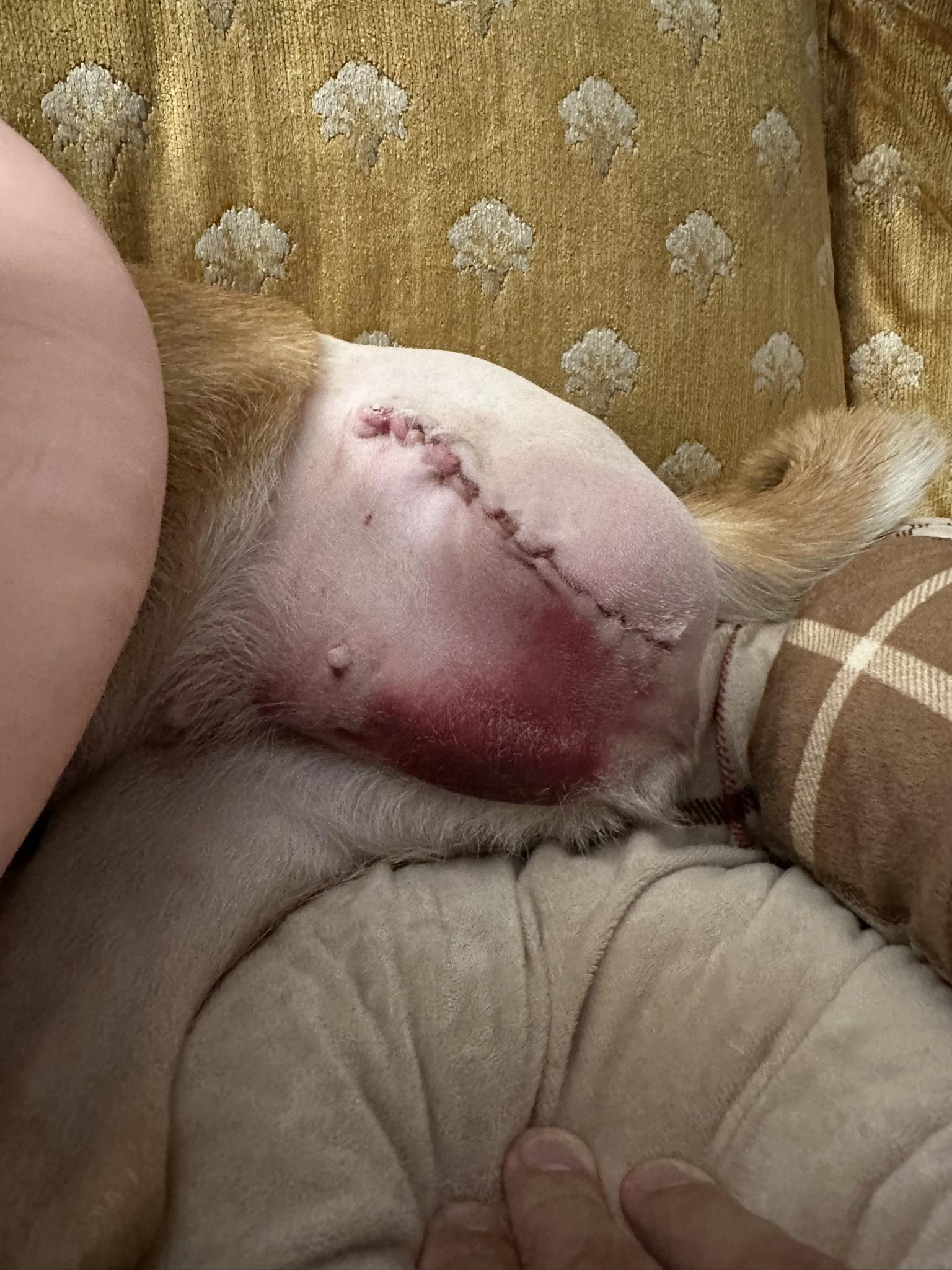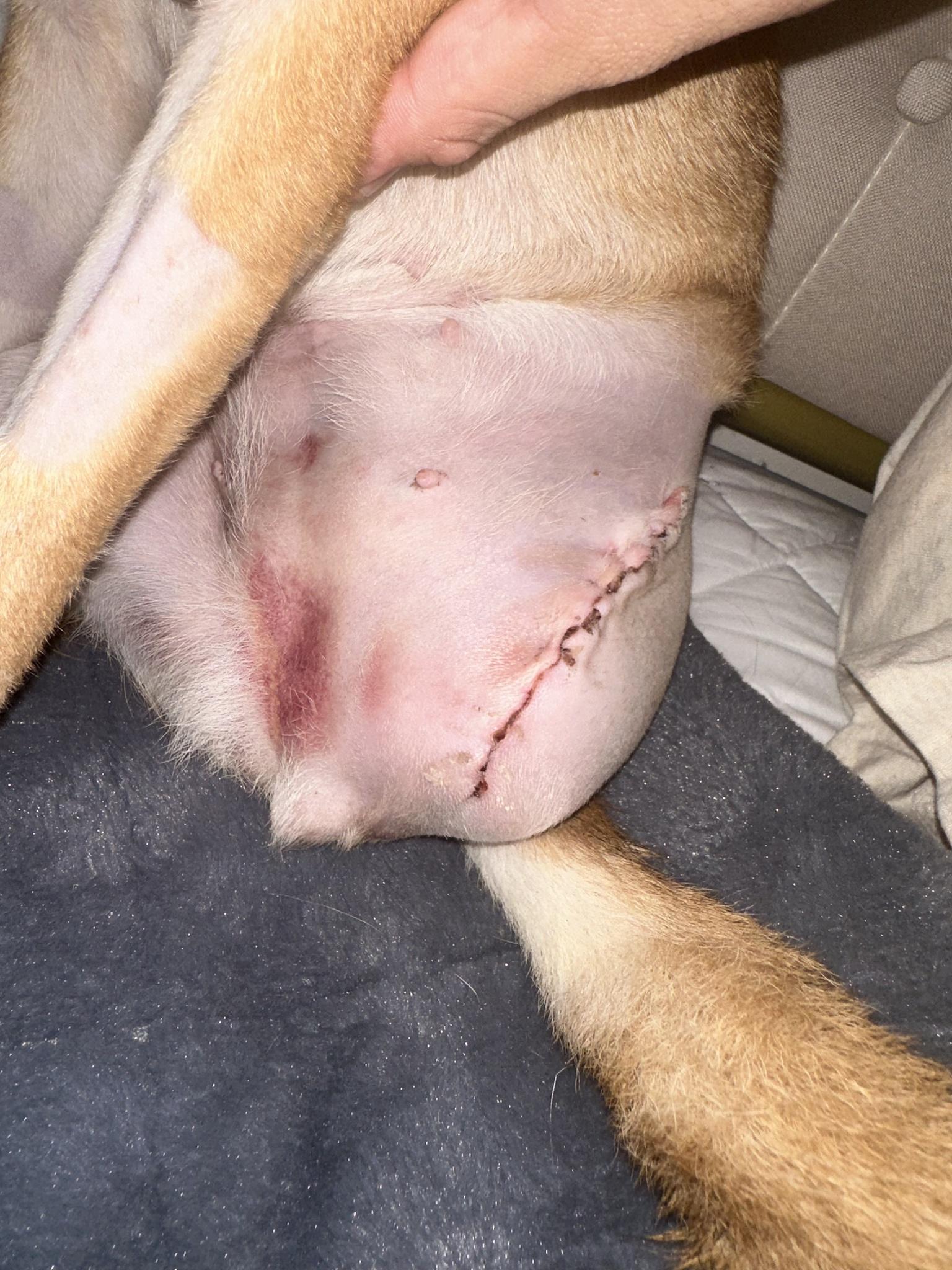Amputation Seroma Swelling Care Tips
If your new amputee dog or cat is leaking fluid at the incision site, don’t panic. These Tripawd amputation seroma swelling tips will put your mind at ease.
If your new amputee dog or cat is leaking fluid at the incision site, don’t panic. These Tripawd amputation seroma swelling tips will put your mind at ease.
Photos and definition of dog leg amputation post-surgery seromas
Amputation surgery for Greyhounds requires careful planning, medications, and surgical skill. Learn what you need to know before the big day.
The Komfy K9 dog bed is Tripawd Approved for superior orthopedic support and comfort with adjustable firmness and interchangeable cover.
Don’t be afraid of amputation wound care for Tripawd dogs and cats. These tips explain what your pet needs for healing and recovery.
One of the most worrisome things about a new Tripawd’s recovery is constantly wondering: is my cat or dog’s amputation bruise normal or not? Today let’s look at some before and after photos of bruising. Hopefully these will put your mind at ease.

First you should know that bruising is normal. It’s a side effect of amputation surgery. A big bruise happens because skin, muscles and tissues have been cut in order to remove the bad leg.
The amputation site becomes traumatized by the leg removal, and bruising appears soon after surgery.
A cat or dog’s amputation bruise looks worse before it gets better. The day after surgery, skin around the incision area will start turning into an angry, dark purplish color. Then for about the next five days, the bruises will lighten into shades of green, yellow, and light brown.
A dog’s amputation bruise looks bad, but don’t panic. But most bruises will fade over the next two weeks.
Does this look concerning or just bruising?

There’s not much you need to do about the bruising within the first three days unless your vet instructs you to do otherwise. Gentle heat and ice therapy can help minimize discomfort 72 hours after surgery. According to animal massage expert Wendy Richardson, you should wait until three days after amputation surgery to apply heat and ice therapy.
It’s even better today. Almost no red and a lot of the area is a very faint yellow now.

It’s a Tripawd’s amputation wound care that’s more important. But you don’t have to obsess or go overboard to keep it sterile. Just keep the wound area clean, don’t bandage or apply topical medications unless your vet tells you to.
Most amputation incisions need minimal care during recovery. But you do need to watch for signs that something is not normal, such as:
Is there any gross, cloudy, or stinky fluid draining from the incision? Normal drainage (a “seroma“) has a pink color, but is clear and doesn’t smell. If you suspect the discharge is not normal tell your vet.
If sutures or staples fall out, this might be a sign that your dog’s incision is infected. The skin cannot heal, so the sutures or staples fall out. Also, if you see a wide gap (larger than ¼ inch) between the wound or tissue sticking out from the wound, call your vet immediately.
Again, this is probably a seroma, which is a combination of blood and bodily fluid buildup that drains at the incision site. Seromas usually aren’t serious. Sometimes they need draining in a vet’s office. But tell your vet your dog is having one, just to be safe. And do your best to prevent a seroma by keeping your dog calm for at least a week after amputation. To much activity can ramp up the immune system and lead to excess fluid buildup.

Most amputee dogs and cats won’t have a Tripawd amputation incision infection, but here’s what you need to know to avoid one.
Today’s Tripawds Tuesday shines a light on the importance of good pain control. Read about Bender’s myxosarcoma pain management victory at the University of Guelph veterinary teaching hospital.
Meet today’s Tripawd Tuesday superstar, Kokomo! This three-legged rescue bullie rescue is beating osteosarcoma odds for over two years and loving every minute of life.
Is your cat or dog losing a leg? If so this Tripawds Recovery Shopping List for post-op care will help prepare your home after surgery.